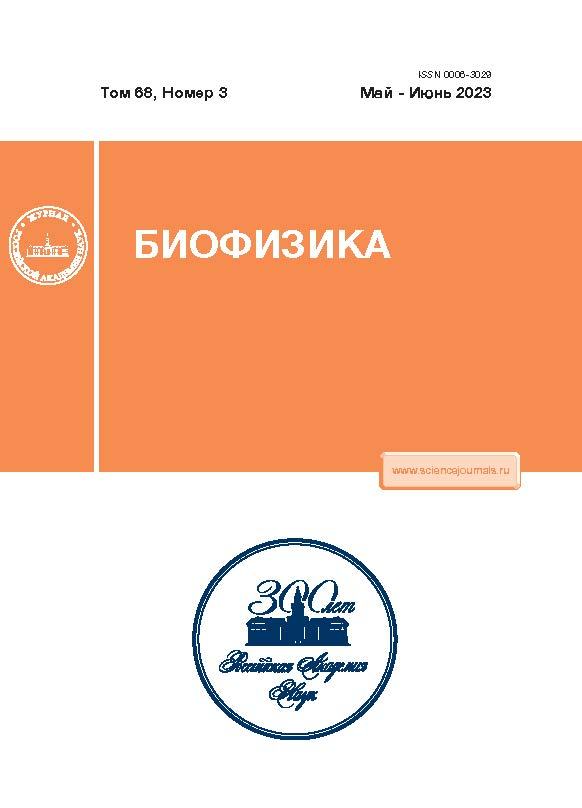Analysis of coverage of Alu repeats by aligned genomic reads
- Autores: Tamazian G.S1, Kanapin A.A1, Samsonova A.A1
-
Afiliações:
- Institute of Translational Biomedicine, St. Petersburg State University
- Edição: Volume 68, Nº 3 (2023)
- Páginas: 496-500
- Seção: Articles
- URL: https://cardiosomatics.ru/0006-3029/article/view/673484
- DOI: https://doi.org/10.31857/S0006302923030109
- EDN: https://elibrary.ru/FRPXRZ
- ID: 673484
Citar
Texto integral
Resumo
Alu repeats occupy a notable part of the human genome and greatly affect processes related to genome integrity maintenance. One of the basic methods for studying variation in a genome, including Alu repeats is genome sequencing followed by mapping the sequenced reads to a reference genome sequence. The key feature of the read alignment is the depth of reference genome region coverage by mapped reads. In this paper, a new method is proposed for analyzing the coverage of Alu repeats and their flanking regions by whole-genome sequencing reads and the distribution of mean coverage in two aforementioned region types is explored.
Palavras-chave
Sobre autores
G. Tamazian
Institute of Translational Biomedicine, St. Petersburg State UniversitySt. Petersburg, Russia
A. Kanapin
Institute of Translational Biomedicine, St. Petersburg State UniversitySt. Petersburg, Russia
A. Samsonova
Institute of Translational Biomedicine, St. Petersburg State University
Email: a.samsonova@spbu.ru
St. Petersburg, Russia
Bibliografia
- M. A. Batzer and P. L. Deininger, Nat. Rev. Genet., 3 (5), 370 (2002).
- F. Hormozdiari, M. K. Konkel, J. Prado-Martinez. et al., Proc. Natl. Acad. Sci. USA, 110 (33), 13457 (2013).
- E. S. Lander, L. M. Linton, B. Birren, et al., Nature, 409 (6822), 860 (2001).
- J. C. Venter, M. D. Adams, E. W. Myers, et al., Science, 291 (5507), 1304 (2001).
- F. C. Chen, Y. Z. Chen, and T. J. Chuang, Bioinformatics, 25 (11), 1419 (2009).
- J. M. Chen, E. Masson, C. Le Marechal, et al., Cytogenet Genome Res, 123 (1-4), 102 (2008).
- P. Deininger, Genome Biol., 12 (12), 236 (2011).
- L. M. Payer, J. P. Steranka, W. R. Yang, et al., Proc. Natl. Acad. Sci. USA, 114 (20), E3984 (2017).
- S. Shen, L. Lin, J. J. Cai, et al., Proc. Natl. Acad. Sci. USA, 108 (7), 2837 (2011).
- I. Vorechovsky, Hum, Genet., 127 (2), 135 (2010).
- S. Pavlov, V. V. Gursky, M. Samsonova, et al., Life (Basel), 11 (11), 1209 (2021). doi: 10.3390/life11111209
- A. Smit, R. Hubley, and P. Green, RepeatMasker Open-4.0 (accessed 03/18/2022).
- H. Mao and H. Wang, Bioinformatics, 33 (5), 743 (2017).
- S. E. Staton and J. M. Burke, Bioinformatics, 31 (11), 1827 (2015).
- H. Li and R. Durbin, Bioinformatics, 25 (14), 1754 (2009).
- S. Fairley, E. Lowy-Gallego, E. Perry, et al., Nucl. Acids Res., 48 (D1), D941 (2020).
- H. Li, B. Handsaker, A. Wysoker, et al., Bioinformatics, 25 (16), 2078 (2009).
- J. K. Bonfield, J. Marshall, P. Danecek, et al., Gigascience, 10 (2), giab007 (2021). doi: 10.1093/giga-science/giab007
- G. Tamazian, N. Cherkasov, A. Kanapin, et al., in BGRS/SB-2022 (Novosibirsk, Russia, 2022), pp. 11211122.
- R Core Team, R: A Language and Environment for Statistical Computing (R Foundation for Statistical Computing, 2022).
- L. Scrucca, M. Fop, T. B. Murphy, et al., The R Journal, 8 (1), 289 (2016).
- Broad Institute, Picard: A set of command line tools for manipulating high-throughput sequencing data (2022).
- A. R. Quinlan and I. M. Hall, Bioinformatics, 26 (6), 841 (2010).
- P. Danecek, J. K. Bonfield, J. Liddle, et al., Gigascience, 10 (2), giab008 (2021). doi: 10.1093/giga-science/giab008
Arquivos suplementares










